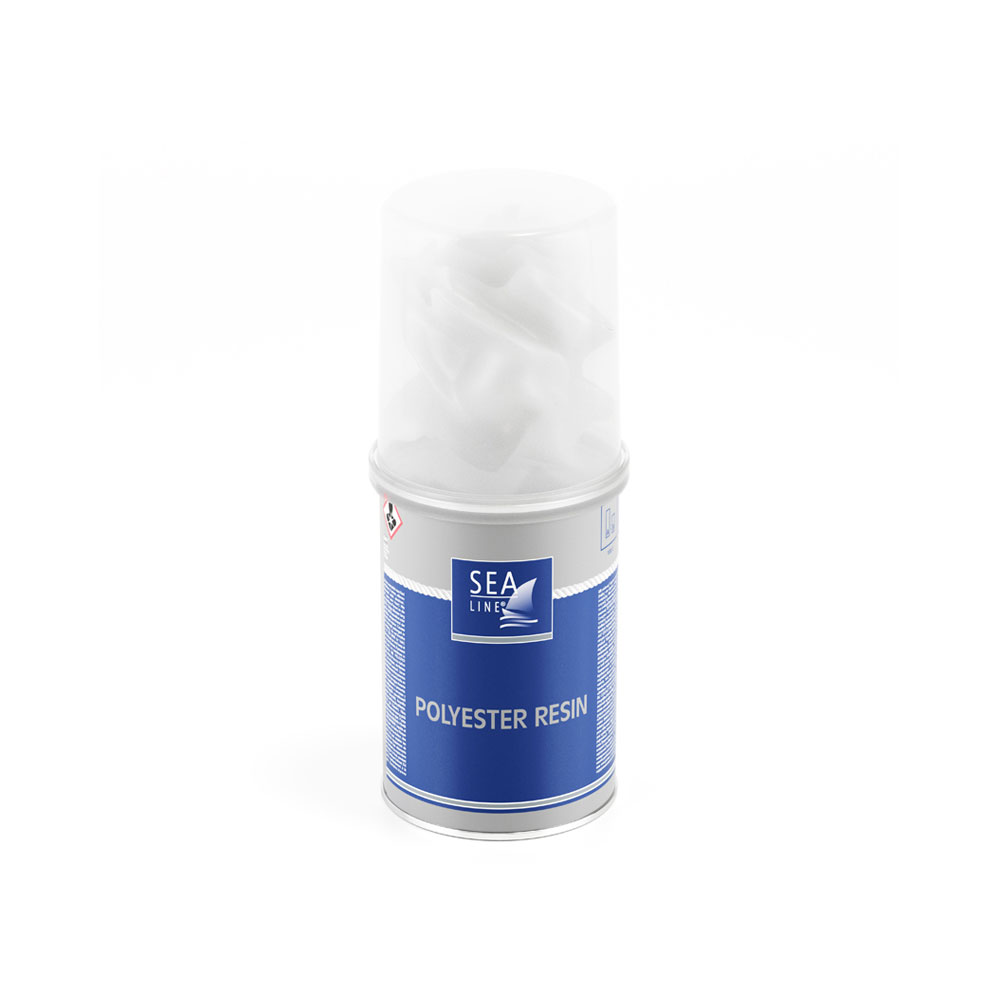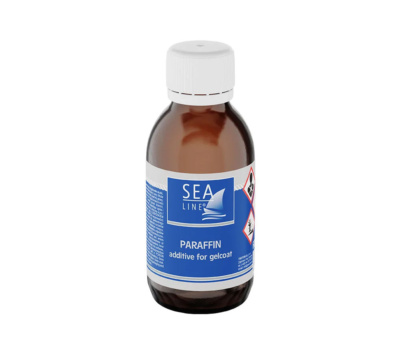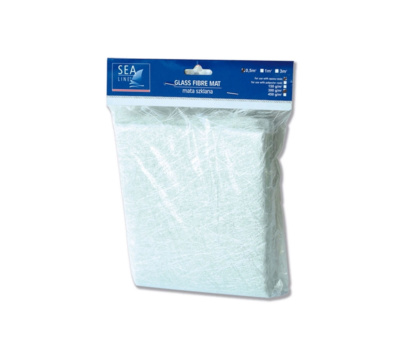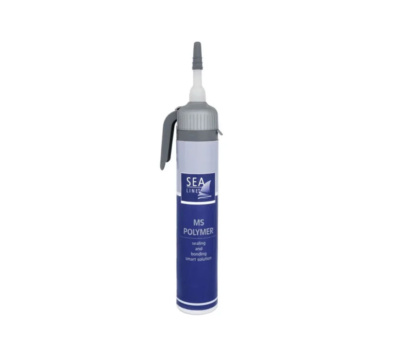Polyester structural resin is recommended for laminating, reinforcing surfaces, patching holes, and repairs, especially in situations where the speed of repair execution is crucial.
| Weight | Code |
|---|---|
| 250 g | 2392 |
| 500 g | 6080 |
| 1 kg | 2480 |

Manually:
To obtain a fully-fledged and adequately strong laminate, use a 2:1 weight ratio of resin to glass mat for polyester or a 1:1 weight ratio of resin to glass fabric.To finish laminated surfaces we recommend using Sea-Line® fillers, Sea-Line® epoxy primers, Sea-Line® topcoats or a Sea-Line® gelcoat repair kit.
| Type | Laminates, steel | |
| Place | Above and below waterline | |
| Function | Laminating, repairs, reinforcement, gluing | |
| Application | Brush, roll | |
| Thinning | Not recommended | |
| Theoretical coverage for 1kg (for 1 layer laminate) | performance for layer of laminate based on glass fibre mats | |
| 150 g/m² 300 g/m² 450 g/m² | ~3,5 m² ~1,7 m² ~1,1 m² | |
| performance for layer of laminate based on glass fibre | ||
| 200 g/m² 400 g/m² | ~5 m² ~2,5 m² | |
| Coats number | According to your needs | |
| Pot life 20°C | 10~15 min | |
| Hardening time | 45 min | |
The resin is available in 2 sets:

Paraffin is an additive mainly to polyester gelcoats, necessary when it is necessary to apply

Fiberglass reinforcements, including boat mats and fiberglass fabrics combined with resin, are used for repairs

Is elastic sealant recommended for sealing and bonding various types of materials.
Do not add more hardener, because after the base has cured, the remaining hardener will react with subsequent layers, which will be applied to the surface and cause defects. For the product to work properly, please follow the proportions given by the manufacturer.
If the scratches are not deep, then we can renew the scratched side by polishing with Sea-Line polishing pastes. Above the waterline, when the scratches are not deep, the surface can be repaired with a DRY FAST gel coat filler. Deep scratches should be filled with epoxy filler (selected depending on the requirements of the scratched surface), painted with a primer and then painted with topcoat.
It is not recommended to apply 2K paints over 1K paints. 1K and 2K inks differ in their composition and properties, including hardness, chemical resistance and durability. 1K paints are one-component and dry by evaporating the solvent, while 2K paints are two-component and need to be cured by adding a hardener. Applying 2K paint over 1K paint can cause unpredictable chemical reactions and lead to undesirable effects such as dulling, chipping or flaking of the paint. Therefore, always use paints according to the manufacturer’s instructions and do not mix different types of paints. farby zgodnie z instrukcjami producenta i nie mieszać różnych rodzajów farb.